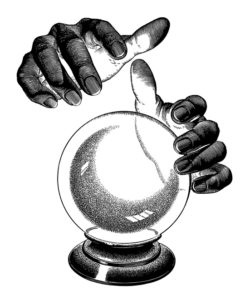Patents for Fire Dancers and Sorcerers
People easily understand that “primitives” cement their social order by believing in ghosts and spirits, and gathering each full moon to dance together around the campfire. What we fail to appreciate is that our modern institutions function on exactly the same basis. Modern business-people and lawyers are, in fact, powerful sorcerers. The principal difference between them and tribal shamans is that modern lawyers tell far stranger tales.
Yuval Noah Harari, Sapiens – A Brief History of Humankind
Patents
Patents are temporary government monopolies for qualifying inventions. They trace their roots to unique culinary dishes in Ancient Greece and glassmaking in medieval Europe. And you know those folks were dancing around fires. There were some early kinks: the English crown once granted a patent for salt in order to raise some dough (super bad pun; but, was the patent worth its salt? Ok, I’m finished). That way of doing things turned out to be unsustainable. More objective patent grant requirements were developed. Today, an invention must be new and nonobvious—among other requirements—to qualify for a patent.
Patentable inventions include apparatuses, compositions, plants, methods, and miscellaneous, whiz-bang contraptionry. There are different kinds of patents: utility patents protect functional or utilitarian aspects; design patents protect designs. most patents are geographically bounded and granted by country. Some types of patent applications—such as U.S. provisional patent applications or international PCT applications—act as a type of option for pursuing a patent: they start the process, then allow inventors some time (usually between 12 and 30 months) for market testing and deciding whether and how to continue. The above result in different paths and strategies to pursuing patents.
Whether to Pursue a Patent
There are many things for fire dancers and sorcerers to consider in deciding whether to pursue a patent. Foremost among these should be business objectives. Patent pursuit takes time and money —it may not always make sense. However, in many cases, a patent may be key to business objectives. For example, if it’s important to monopolize a product, product feature, or market, a patent may translate into a significant competitive advantage. Patents may also provide defensive security for business supply chains. They can also signal strength, due diligence, and novelty to potential customers, investors, and financiers. Additionally, patents build appraisable assets and value within businesses. A good patent attorney can help an inventor or business determine whether to pursue patent protection and the best way to go about it.
The Process
To successfully pursue a patent, you should use a skilled patent attorney (or agent). Saving money and trying to master difficult, new things is worthwhile. But, trying to get a patent is not a reasonable DIY project. Significantly, in the 1892 case of Topliff v. Topliff, the U.S. Supreme court stated that a patent application:
Is one of the most difficult legal instruments to draw with accuracy; and, in view of the fact that valuable inventions are often placed in the hands of inexperienced persons to prepare such specifications and claims, it is no matter of surprise that the latter frequently fail to describe with requisite certainty the exact invention of the patentee, and err either in claiming that which the patentee had not in fact invented, or in omitting some element which was a valuable or essential part of his [or her] actual invention.
(A more recent commentator follows-up that 1892 was “child’s play” compared to the present.)
The best patent attorneys begin the patent process by identifying and clarifying client and business objectives. A patent attorney helps the inventor understand the various paths towards patentability, as well as the strategic pros and cons of and cost estimates for each path. A good patent attorney conducts invention analysis—the process of determining the potential, patentable scope of invention. A patent attorney also conducts prior art searches—investigations of prior, related inventions to identify potential risks, determine patentability, and form strategies for drafting and tailoring the patent application.
When to Start
Timing is very important when considering patents. There are several concepts to keep track of, both the U.S. and abroad. To start, the first person to file a patent application has the overwhelming initiative in obtaining invention rights. This is the consequence of what is known as the first-to-file rule. Also, if you make an invention publicly available, offer it for sale, or sell it, and wait for a year to file a patent application in the u.s., you are not entitled to a patent and cannot get one. This is known as the on-sale bar. The consequences of public availability and sale (before patent application) are even more severe outside the U.S. in most of the world, if you even divulge your invention before filing the patent application, you can’t get a patent. So, it is much better to decide whether to file a patent application early on. In contrast, there is such a thing as filing a patent application too early, before the invention is sufficiently developed. (Although any number circumstances may affect timing, I typically tell inventors that I prefer to start the patent application no earlier than when the invention is 90% complete.)
So, grab your fire dance pants, get a good tribal shaman on retainer, and consider whether patents make sense as you go about your powerful, modern-day sorcery.

